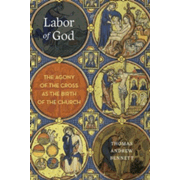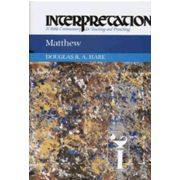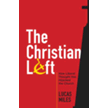OUR READING
for Transfiguration Sunday comes to us from the Gospel According to Matthew.
However, as the church of Christ, we are called to also note the presence of
this same lesson in the writings of Mark and Luke. This seemingly indicates the
high importance that the early church writers held for this text. Here we read...
And after six days
Jesus took with him Peter and James and John his brother, and led them up a
high mountain apart. And he was transfigured before them, and his face shone
like the sun, and his garments became white as light.
And behold, there appeared to them Moses and
Elijah, talking with him. And Peter said to Jesus, "Lord, it is well that
we are here; if you wish, I will make three booths here, one for you and one
for Moses and one for Elijah."
He was still speaking, when lo, a bright cloud
overshadowed them, and a voice from the cloud said, "This is my beloved
Son, with whom I am well pleased; listen to him."
When the disciples heard this, they fell on
their faces, and were filled with awe. But Jesus came and touched them, saying,
"Rise, and have no fear."
And when they lifted up their eyes, they saw
no one but Jesus only. And as they were coming down the mountain, Jesus
commanded them, "Tell no one the vision, until the Son of man is raised
from the dead." (Matthew 17:1-9)
Brighter than Bright…
As we begin reading our lesson through for meaning, the knowledge forms that the text is largely mirrored in other gospels.
However, the images that we receive from the other records changed slightly as
each community tailored the witness according to the need for relating accuracy
and necessity, while using the available parchment resources for community environments.
For example, we know that the text found in Mark, being likely the earliest
written and possibly the original source document for the later two accounts, says that
the event occurred “after six days”. The later Lukan dialog however, seems to disagree
with that assessment, saying that the event occurred after “about eight days”.
We may ask then about how we should read the scriptural difference?
I contend that either
the “about” vacillation found either may be occurring because of cultural beginnings and endings of days;
or the writer of Luke did not hold to the time span with similar importance of the
other gospel writers. This last may be reasoned that Luke may be addressing
communities more infused with Gentiles. For these latter persons, the six day interval
was not held up as important.
More for our
study, however, is that the imposed chapter break found in this reading separates the flow
of events. Jesus had just said in the
previous chapter that some of the disciples would not die before the Son of
Man would be seen coming in his kingdom (Matthew 16:28). The selection of
Peter, James and John then followed. The event, being only days after the
former scene… likely occurred at Mount Hermon, near Caesarea Phillippi. This
locates close to where the Lord had been doing ministry in the earlier chapter. To expand
a familiar maxim then, what the apostles found upon climbing the Mount of
Transfiguration was that there was far more to their lowly rabbinical teacher
than met the eye.
We find that the text
related that Jesus was “transfigured” ( Greek – “metamorphothe” or “bodily
changed” ). Therefore the miraculous event occurred there as the three men were
present as witnesses. Jesus was suddenly presented as far more than they previously had
seen. We note that for the
privileged apostles another miraculous fact was also revealed… in that Moses
and Elijah were also seen as present talking with Jesus.
We need remember here, that according to Hebrew scripture the lawgiver Moses had died and was buried, and the prophet Elijah had been transported to heaven on a chariot. Consequently, both were far beyond the habitation of men. We thus ask whether symbolically… “Are these two, therefore, representatives of both the Law and those prophets which spoke... and yet still speak through scripture in concert about the Son of Man?” If so, the event spoke boldly to the Sadducee who did not believe in eternal life and the Pharisee who only adhered to the Law as the latter being the Torah in the first five books of the Bible. Here is where I believe the high importance of the event for the synagogue community of Matthew emerges.
We need remember here, that according to Hebrew scripture the lawgiver Moses had died and was buried, and the prophet Elijah had been transported to heaven on a chariot. Consequently, both were far beyond the habitation of men. We thus ask whether symbolically… “Are these two, therefore, representatives of both the Law and those prophets which spoke... and yet still speak through scripture in concert about the Son of Man?” If so, the event spoke boldly to the Sadducee who did not believe in eternal life and the Pharisee who only adhered to the Law as the latter being the Torah in the first five books of the Bible. Here is where I believe the high importance of the event for the synagogue community of Matthew emerges.
You see, Moses is clearly
described as glorified. Thus to the initial readers he represents the redeemed of God that had already
passed through the gate of death into the kingdom. Elijah, also being glorified, represents also those who
had entered the heavenly realm alive by the will of God… and still yet has
prophetic mission. Thus the three
disciples present, who were not yet glorified… were representing Israel. "Israel" as a people
is presented therefore as redefined here in Matthew, as a future kingdom of both Judaic
believers and other nations to be brought into the kingdom.
 |
The Master Plan of Evangelism, 2nd edition, abridged By Dr. Robert E. Coleman |
We note a minor
change in witness, in that Matthew said that while Peter was still
speaking... the Spirit spoke to them. Oh, this is epic or us to observe! How sinful we yet are… blabbing on when we
should be listening. Noted however, is that some words of Mark are here omitted,
possibly in that they indicated that Peter was somewhat flabbergasted. In Luke also,
he seemingly muttered the booth building proposal because he did not know what else
to say. Subsequently, we ask
whether it is possible that the Matthean gospel, written in the same era as Luke... deliberately
portrayed Peter in more favorable light? The gospel record seems to indicate
this possibility because Petrine influence was residually stronger for that community…
while Pauline influence was found as more evident in the Markan and Lukan
churches. Is this the competitive church nature of which Paul spoke?
As the scene unfolds in
Matthew, an inclusion also occurred. The voice heard from heaven said that … “This is my beloved Son…: and continued
further … “ with whom I am will pleased.”.
The latter phrasing is strictly Matthean. In this way, this late account thus links us linguistically backward
in time… to the occurrence where John baptized Jesus at the Jordan River. Therefore
the author deliberately connected any surviving followers of John the Baptist to the
message. This might indicate that they may have yet had influential presence within
the writer’s community.
Given that the event
is recorded by all three synoptic gospels, the whole Christian church is molded
by the hearing of the happenings on the Mount of Transfiguration. Given the
revelations found here, we see that many factors were brought together by
the event. Characters who represented both the Law and prophets met together with
Jesus, with three prominent disciples as audience. The Spirit of God spoke to
the befuddled apostles present, and they were instructed not to divulge their
knowledge concerning the identity of the Son of Man as the Son of God… until
all things are revealed! This last empowerment would not come to pass until the
Spirit of Pentecost brought the Church into being.
 |
The Insanity of Obedience: Walking with Jesus in Tough Places By Nik Ripken with Barry Stricker |
Rise, Have No Fear…
At this point we may ask, “What is the meaning of this text
for the Church today?” Are we readers who are so far removed in time from the
church of Matthew still called to receive eternal Truth from this setting? The descriptive text of
Matthew relates a moment in time that fulfilled a certain prophetic closure.
During the days of Moses the nation of Israel was formed. During the time
of Elijah walking upon earth, that same nation wandered far from God… so much
so that the land became torn apart and exiled. Prophetic times brought revelations
that occurred pointing far beyond their day. During that earlier era, Elijah was prophetically empowered
to tell of the corporate resurrection to a widow at Zarephath. If we recall that prophetic
resurrection scene, during a time of sinful drought… life was restored to the
widow’s son. Centuries later, though there are some today that argue that the
young man brought back to life was simply resuscitated by CPR, the resurrection
of Jesus Christ after three days was recorded as prophetically authentic by the infant Church.
That nation which was previously exiled unto death into Babylon was therefore gathered
not by happenstance... but was resurrected not as a geographical return often credited to Greek and Roman-ruled
conquest, but by the Son of Man crucified and Risen.
 |
Labor of God: The Agony of the Cross as the Birth of the Church By Thomas Andrew Bennett |
Now Is The Time!
For the early Church,
this time of waiting and fulfillment was hard to fathom, as evidenced by
Peter’s reaction. He was wrong at the time to work for the physicality of heaven here upon
earth. Even today, whatever tabernacles we propose to build in efforts of
progressive religion or politics, to make for ourselves booths in our world… we
must always remember to prayerfully ask God for his prophetical fulfillment. As answer to this danger, we must
look to scripture for our foundation. At the time of the
Transfiguration, booths could not be built. The sacrifice of Christ upon
the cross was not yet offered. Important future actions needed were not yet done
by Peter and his companions.
Our answer now is that we should mirror that which is historically revealed to us in scripture… in both Old Testament and New Testament. Note that Jesus, as revealed by the power of the Spirit on the Mount of Transfiguration, was revealed as both Son of Man and Son of God. This Jesus, born into the world and divinely shown, fooled Satan and took upon Himself the penalty of death for us. He took our punishment for denial and unbelief… dying on the cross to save us… and was then Resurrected by the love of the Father. In this way he gave us his eternal life. The divine plan was shown as long to be internationally portable, available to all persons by the vision on the mountain and soon finished afterward by our Savior.
Our answer now is that we should mirror that which is historically revealed to us in scripture… in both Old Testament and New Testament. Note that Jesus, as revealed by the power of the Spirit on the Mount of Transfiguration, was revealed as both Son of Man and Son of God. This Jesus, born into the world and divinely shown, fooled Satan and took upon Himself the penalty of death for us. He took our punishment for denial and unbelief… dying on the cross to save us… and was then Resurrected by the love of the Father. In this way he gave us his eternal life. The divine plan was shown as long to be internationally portable, available to all persons by the vision on the mountain and soon finished afterward by our Savior.
 |
Church of the Small Things, DVD Study |
Consequently we today are called to see more
clearly the glistening message related to the followers in Matthew’s infant
church. God’s love surely universally endures.., but God’s love was poured out particularly though
Christ… freeing us from the ritual offerings of Moses and from the exile that
followed the time of Elijah. Revelation of our sinful separation from God was
shown clearly through the Law and the prophets, but in the days of the apostles God was shown as doing a new thing.
You see, by gift of
the Holy Spirit our Lord preserved for us this reading… so that we may see that our
future today is secured into eternity. Just as Jesus our Lord was baptized by John,
we too are baptized. Just as the apostles saw the glorious revelation of Light
we too may see that same Light. Christ Jesus arose from the grave and we shall arise
unto eternal life in accordance with the promise. So the words of our Lord still
reach across the centuries to us. Let us hear this message clearly on Transfiguration Sunday…
for Jesus said to his followers… “Arise,
and have no fear.” Thanks be to God.
Please be invited to view our ministry videos on YouTube at:...
https://www.youtube.com/channel/UCwz42wBIiwAhdN49m5k_EQA




No comments:
Post a Comment